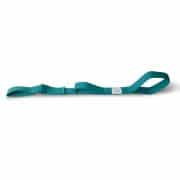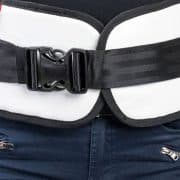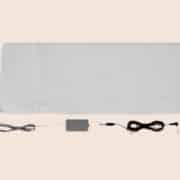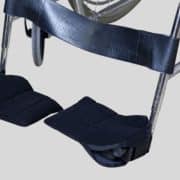How to use a Leg Lifter
Are you struggling with moving your legs during bed transfers or while getting in and out of a wheelchair? Imagine having a simple, yet effective tool that can assist you in these tasks, giving you the independence and confidence you need. Introducing the leg lifter, a life-changing device designed to help individuals with limited mobility...
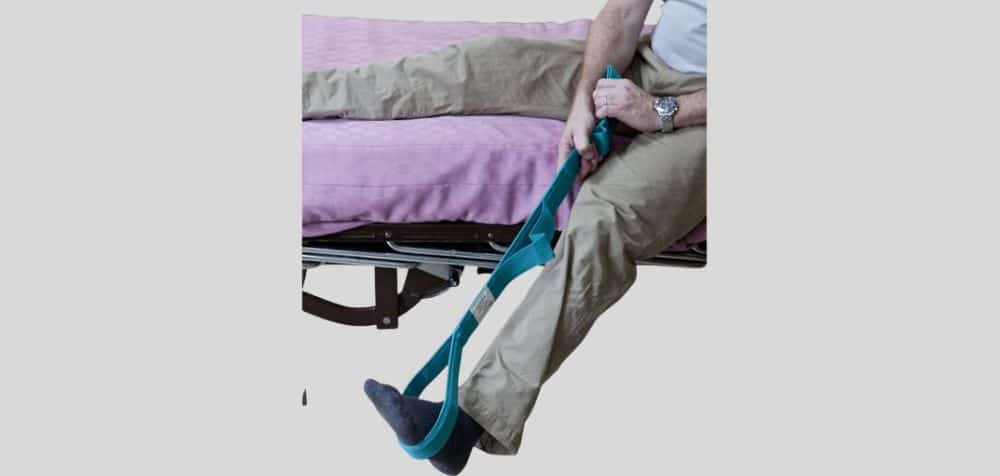
Are you struggling with moving your legs during bed transfers or while getting in and out of a wheelchair? Imagine having a simple, yet effective tool that can assist you in these tasks, giving you the independence and confidence you need. Introducing the leg lifter, a life-changing device designed to help individuals with limited mobility regain control and freedom in their daily lives.
In this blog post, we will take you on a journey through the world of leg lifters, exploring their components, uses, and how to choose the right one for your needs. We’ll also share tips on caring for your leg lifter and ensuring your safety while using it. So, let’s dive in and discover the benefits of leg lifters for easier bed transfers and more!
Key Takeaways
Here are the main points about leg lifters:
- Leg lifters are self-help products designed to assist individuals with mobility issues in transferring their legs onto and off beds or wheelchairs.
- The key components of a leg lifter include the webbing strap, semi-rigid insert, wrist strap, and bendable metal rod for durability and customizability.
- When using a leg lifter ensure you are in a secure position, hold the lowest hand loop tightly, lean forward slightly to lift comfortably. Maintain straight arm when lifting foot from surface & reposition your legs with device for safe use.
Understanding Leg Lifters
Leg lifters, self-help products, streamline the task of positioning one’s leg onto or off a bed or wheelchair, tailored to the user’s needs and preferences. They are constructed from robust webbing and feature a semi-rigid insert, providing support and stability during use. Leg lifters are particularly beneficial for individuals who have undergone hip replacements or have difficulty lifting their legs through their own strength.
A typical leg lifter consists of:
- An upper loop
- A lower loop
- A webbing strap
- A stiffened stem
- A semi-rigid insert
The smaller loop is intended to provide a secure grip for the patient, while the larger loop is designed to be looped around the patient’s foot. The overall length of the leg lifter should be suitable for the user’s height and needs.
Key Components
Providing flexibility and strength to the device, the webbing strap is an indispensable component of a leg lifter. The semi-rigid insert, on the other hand, facilitates the effortless sliding of the lifter over your foot. The combination of these components results in a durable and reliable aid for lifting and repositioning your legs.
Another important feature of leg lifters is the wrist strap, which is designed to be wrapped around one’s wrist. This strap ensures that the user maintains a firm grip on the lifter during use, providing added stability and control.
Additionally, the bendable metal rod in the leg lifter maintains rigidity while allowing the user to customize its shape to suit their requirements.
Common Uses
Leg lifters are versatile tools, designed to aid in leg elevation and provide assistance in various scenarios where an individual requires help moving a stiff or immobile leg when transferring or dressing. They can be particularly useful during bed transfers, as they can help individuals transition from a bed to a wheelchair or other seating devices, as well as assist in moving from a recumbent position to a sitting position in bed.
Additionally, leg lifters can be employed to assist individuals during wheelchair transfers, helping them move from a wheelchair to a bed, or from a sitting position to a standing position in a wheelchair. With so many practical applications, it’s easy to see how leg lifters can be an indispensable aid for those with limited mobility.
How to Use a Leg Lifter
Mastering the use of a leg lifter is a straightforward process, requiring only a bit of practice. The main purpose of a leg lifter is to provide assistance to patients in entering and exiting the bed by furnishing supplemental support in raising one or both legs. To utilize a leg lifter, simply follow these steps:
- Sit on the side of the bed.
- Position the open foot loop of the leg lifter over the foot.
- Lean forward and hold the lowest hand loop available.
- Utilize the leg lifter to lift and reposition the leg without bending over.
Depending on the user’s needs and preferences, a leg lifter can be employed to lift either one or both legs. This versatility makes it an invaluable tool for individuals with varying levels of mobility.
Lifting from Bed
To lift a leg from a bed using a leg lifter, follow these steps:
- Place the open foot loop over the foot, ensuring that the lower stiffened loop is positioned around the ankle and pulled up to the calf.
- Lean forward and hold the lowest hand loop possible, gripping it firmly.
- Lean forward slightly to achieve a comfortable lift.
As you lean back, maintain your arm in a straight position, utilizing your body weight to lift the patient’s foot from the surface. Carefully transfer your leg into the desired position, such as onto a footstool or slides, and repeat the process for the other leg if necessary.
Wheelchair and Car Assistance
Utilizing a leg lifter for wheelchair and car transfers can be immensely helpful in maintaining independence and improving mobility. To use a leg lifter in these situations, place your hand through the top loop of the leg lifter and your foot through the bottom loop. With one hand, lift your leg, providing support and guidance throughout the process.
Carefully transfer your leg into the desired position, such as onto the wheelchair or into the car. If necessary, repeat the process for the other leg, taking your time and ensuring adequate support and stability throughout the transfer process.
Choosing the Right Leg Lifter
Ensuring maximum benefits and ease of use hinges on selecting the right leg lifter. When making a choice, consider factors such as:
- Purpose
- Ease of use
- Length and adjustability
- Material and durability
- Safety features
- Comfort
- Portability
- Price
By taking these factors into account, you’ll be able to find a leg lifter that meets your specific needs and preferences.
When considering your individual requirements and preferences, it’s important to determine the appropriate leg lifter quantity. Assess your specific needs and mobility limitations before purchasing a leg lifter to ensure you choose the most suitable option for your situation.
Length and Material
The overall length of a leg lifter should be suitable for the user’s height and needs. A standard leg lifter has an overall dimension of 105cm, with 85cm excluding the wrist strap. Be sure to choose a length that provides ample support and comfort during use.
The material and durability of a leg lifter are also essential factors to consider. Leg lifters are typically composed of heavy-duty nylon material, neoprene, or durable vinyl. Opt for a leg lifter constructed from high-quality materials to ensure longevity and reliability.
Caring for Your Leg Lifter
Proper care is key to prolonging the lifespan of your leg lifter. Hand wash the leg lifter at a low temperature using a mild detergent, avoiding machine washing. Allow the product to fully dry before using or storing it.
Store your leg lifter in a dry and cool place when not in use, keeping it away from direct sunlight and heat sources. Regularly inspect the leg lifter for any signs of wear and tear, checking for loose parts or frayed straps. Adhere to the manufacturer’s instructions for use and cleaning, and promptly replace any worn or damaged parts.
Leg Lifter Safety Tips
When using a leg lifter, safety should always be at the forefront. Ensure that you are in a secure and stable position before using the device, as this guarantees your safety and comfort during the transfer. When placing the large loop of the leg lifter over your foot, position it around your ankle and pull it up to your calf. Hold the lowest hand loop tightly. Lean forward slightly to lift comfortably..
Remember to maintain a straight arm and lean back to lift your foot from the surface, using your body weight to your advantage. Reposition your legs one at a time, without requiring assistance, by utilizing the leg lifter to lift and move your leg to the desired position. By following these safety tips, you can enjoy the full benefits of a leg lifter while minimizing the risk of injury.
Summary
In conclusion, leg lifters are an invaluable aid for those with limited mobility, providing assistance in tasks such as bed transfers and wheelchair assistance. By understanding the components and uses of leg lifters, selecting the right one based on length and material, and properly caring for and using the device, you can experience improved mobility and independence in your daily life.
Don’t let limited mobility hold you back. Embrace the benefits of a leg lifter and regain control of your life today. Take the first step towards easier bed transfers and enhanced mobility by incorporating a leg lifter into your daily routine.
Frequently Asked Questions
What is a leg lifter used for?
The Leg Lifter provides support for patients to get in and out of bed independently, without the need for assistance from a carer.
Who would benefit from a leg lifter?
People with a hip injury or hip replacement would benefit from a leg lifter, which helps them safely and easily raise or lower their leg with either a single or double-handed handle.
How do you use a leg lifter for a bed?
To use a Leg Lifter for a bed, the patient needs to loop the lifter over their foot. Then, they should hold the handle and support the movement of the leg and foot when getting in and out of bed. Additionally, they can also use their right leg to guide the left leg out of bed while lifting.
Can I use a leg lifter independently, without the help of a carer?
Yes, a leg lifter is designed to be used independently, so you can use it without the help of a carer.
How do I clean and maintain my leg lifter?
To clean and maintain your leg lifter, hand wash it at a low temperature with a mild detergent, allow it to dry fully before storing or using, and store it in a cool and dry place away from direct sunlight and heat sources.
Preferred Suppliers for the Healthcare Industry Since 2003
Patient Handling is founded on a sound base of great staff, great products and great partners. We strive to put our clients needs above all else and focus on well thought out solutions for complex needs.



Receive latest news
Contact Us
We are an online store only. Please contact us if you would like a product specialist to assist with your purchase.

